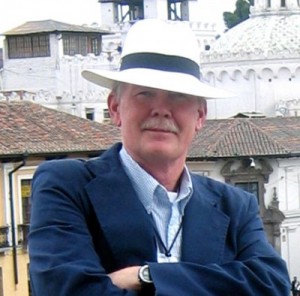
Dr. H. Gary Greene is a marine geologist who has studied the geology of the west coast US margin from Alaska to Baja, California for the past 35 years. He received a Bachelor of Science degree (Geology/Paleontology) from Long Beach State University in 1966, a Master of Science Degree (Geology/Geophysics) from San Jose State University/Moss Landing Marine Laboratories in 1969, and a Ph.D. Degree (Geology/Marine Geology) from Stanford University in 1977. His doctoral thesis was on the geology of the Monterey Bay region and since then he has explored the offshore areas of California, Oregon, Alaska, San Juan Islands of Washington, and the Gulf of California. Gary retired from the United States Geological Survey after more than 28 years of service in 1994 when he took up the directorship of Moss Landing Marine Laboratories.
Presently, he is professor of Marine Geology and heads the Center for Habitat Studies, which he founded in 1994. Gary is also a part-time senior scientist at the Monterey Bay Aquarium Research Institute. He is a Fellow of the California Academy of Sciences and a member of Sigma Xi, the American Association for the Advancement of Science, the American Association of Petroleum Geologists, American Geophysical Union, and is a registered geologist with the States of California and Washington. He is also president of the Monterey Bay Geological Society and a Director of the Circum-Pacific Council for Energy and Mineral Resources.
Through the years Gary has traveled the world while in pursuit of answers to critical scientific questions. He has been Chief Scientist or Co-Chief Scientist on over 80 oceanographic cruises including the National Science Foundation Ocean Drilling Program. His expertise lies in the study of active plate margins, both transform margins like California and New Zealand and subducting margins such as along South America and the Aleutian Islands. He spent over 10 years investigating the island-arc regions of the South Pacific.
He has authored or co-authored over 250 scientific papers, maps and books. Presently, Gary’s research involves the characterization of marine benthic habitats and the study of underwater landslides. Much of his time is now spent in working to standardize the way the scientific community describes and maps marine benthic habitats.
Gary spoke to an overflow crowd of the QGS in Nov. 2015 on the “Ecology of the Salish Sea.” Updated Oct. 2021.



